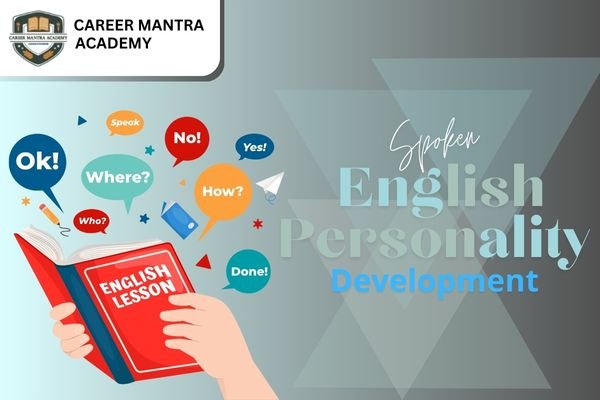English Speaking Course Syllabus: Complete Guide to Levels, Skills, and Benefits in 2025
For Applying English Speaking Course Click Here… English Speaking Course Syllabus: The goal of an English speaking course syllabus is to gradually assist students in developing their communication abilities. Grammar, vocabulary, pronunciation, listening, and practice in real-world conversations are among the fundamental topics it covers. The curriculum guarantees that students develop fluency and confidence in everything from simple sentence construction to sophisticated public speaking. An organized curriculum makes learning English simpler and more efficient, whether for academic purposes, professional prospects, or personal development. What is an English Speaking Course? An English speaking course is a structured curriculum created to assist students in becoming more fluent and confident speakers of the language. It emphasizes the development of essential abilities like vocabulary, grammar, pronunciation, listening, and conversation practice. Typically, the course is broken down into beginner, intermediate, and advanced levels so that students can advance gradually. To make learning more interactive, activities like debates, role plays, group discussions, and public speaking are frequently incorporated. Personality development, interview techniques, and business English are also covered in some courses. An English speaking course offers the proper direction and practice to communicate effectively in both professional and everyday settings, regardless of whether you are a professional, student, or someone wishing to improve your communication abilities. How Does an English Speaking Course Syllabus Help Beginners? Beginners benefit greatly from an English speaking course syllabus since it offers a methodical and transparent way to learn the language. Many students initially struggle because they lack vocabulary, are hesitant, or are afraid of making mistakes. In order to address these issues, the syllabus begins with the fundamentals, including basic grammar rules, sentence construction, and common vocabulary. From the very first lessons, beginners are allowed to practice real-life communication by being introduced to basic conversations, self-introduction, and common greetings. Exercises in pronunciation and listening are incorporated to enhance comprehension and speech clarity. Role plays, group practice, and guided speaking sessions are examples of interactive and confidence-boosting learning activities. Building a solid foundation in grammar, which is essential for creating proper sentences, is another area of emphasis in the curriculum. Learners are gradually encouraged to start speaking on their own and go beyond memorized phrases. Beginners who adhere to the syllabus gain the confidence to use English naturally in everyday situations in addition to learning the language’s technical components. This methodical approach guarantees consistent development and equips students to move fluidly to higher fluency levels. Spoken English Course Syllabus Levels: An English speaking course syllabus offers the structured path that is necessary for effective English learning. To accommodate students with varying skill levels, it is typically broken down into levels. Every level has its own goals, subjects, and exercises, ranging from novices who are just getting started to experts who wish to improve their fluency. The three primary levels of a spoken English course syllabus are broken down in detail below. Level 1: Basic Level Syllabus – Building Strong Foundations The basic level is designed for beginners who have little to no experience speaking English. The major objective here is to provide students with the confidence they need to engage in informal conversations by laying a strong foundation in vocabulary, grammar, and basic communication skills. 1. Vocabulary Development Students are exposed to basic, everyday words at this point. Greetings, self-introductions, family, numbers, days of the week, colors, foods, daily routines, and other commonplace subjects are all covered in the vocabulary. To make it easier for students to remember and use new words, flashcards, memory games, and speaking exercises are utilized. 2. Basic Grammar & Sentence Formation Basic grammar rules like subject-verb agreement, the use of articles (a, an, and the), prepositions, present, past, and future tenses, and basic question construction are all covered in the syllabus. Students are urged to construct brief but impactful sentences, such as introducing themselves, posing inquiries, and courteously answering. 3. Common Everyday Conversations To get students ready for real-world scenarios, there are practical speaking exercises included. These include asking for directions, introducing oneself, ordering food at a restaurant, shopping, and discussing hobbies. Beginners can practice their English in a natural setting with the aid of these role plays. 4. Pronunciation & Listening Practice Sound practice and phonics are used to teach proper pronunciation. To enhance their listening comprehension skills, students listen to audios, conversations, and short stories. To help students be easily understood by others, stress, intonation, and speech clarity are also introduced. By the end of this level, learners can confidently handle basic conversations and understand simple spoken English. Level 2: Intermediate Level Syllabus – Improving Fluency Students move on to the intermediate level after mastering the foundations, where fluency and accuracy take precedence over survival English. At this level, students can express themselves more freely and prepare for situations that are more difficult. 1. Advanced Grammar & Usage Advanced grammar topics like conditional sentences, reported speech, active and passive voice, modal verbs, complex tenses, and sentence connectors are covered in greater detail in the syllabus. By following these guidelines, students can create sentences that are longer and more precise. 2. Group Discussions & Role Plays Students engage in role-playing and group discussions on a variety of subjects to improve their fluency. These exercises foster teamwork, critical thinking, and clear idea expression. Students might, for instance, debate current events, talk about their interests, or pretend to be customers and store owners. 3. Vocabulary Expansion & Idioms Advanced terms about education, careers, travel, technology, and lifestyle are presented to the students. Since idioms and phrasal verbs are frequently employed in everyday English conversations, they are also included. Phrases like “break the ice,” “hit the books,” or “piece of cake,” for example, make students sound more comfortable. 4. Listening & Comprehension Skills At this point, listening exercises become more intricate. To increase their comprehension, students listen to audio clips, podcasts, and interviews. Additionally, they practice taking notes, summarizing, and accurately responding to spoken English. By the end of this level, students can take part




